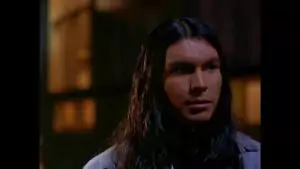By Dan Schneider

✅ AI Essay Writer ✅ AI Detector ✅ Plagchecker ✅ Paraphraser
✅ Summarizer ✅ Citation Generator
Barbara Kopple is one of those filmmakers who can do just about any film well. And so much so that when she misfires, as with her 1998 film on Woody Allen, Wild Man Blues, a critic may still give her the benefit of the doubt. However, when at her best, such as with the classic Academy Award winning documentary from 1976, Harlan County, USA, she is almost nonpareil as a documentarian.
Kopple is likely the best working documentary filmmaker in this country. Yes, this even includes the esteemed Burns brothers of PBS fame. Why? Because, where the Burns boys come up with a formula for their documentaries and run it into the ground, Kopple is flexible.
This 104-minute film has probably had more written about it than any documentary of the last 40 years that did not have the Holocaust as its subject or was helmed by Michael Moore. It was originally made to follow the 1972 campaign by Arnold Miller and Miners For Democracy to defeat UMWA (United Mine Workers of America) president Tony Boyle, after the murder of Boyle’s primary antagonist, the reform-minded Joseph ‘Jock’ Yablonski. But Kopple got lucky.
She was filming some background stuff in eastern Kentucky, and got drawn into the strike between miners that voted to join the union, and the Duke Power that exploited them. The strike (between 1973 and 1974) was at the Brookside mine in Harlan County, run by the Eastover Mining Company, a subsidiary of the Duke Power company in North Carolina. The film engages the viewer not only with the plights of individuals involved in the strike, but expertly weaves in digressions on the mining profession, the ravages of black lung disease (in one scene, a doctor holds up a piece of a dead black lung, and it crumbles to pieces), the Yablonski murder, the history of the UMWA, and the greater union struggle beyond Kentucky.
In the excellent audio commentary by Kopple and her editor, Nancy Baker, the two speak of the struggle to tie so many threads together without losing the viewer’s attention. Yet, one would never have known, as all the pieces fit so perfectly. While there are many memorable lines and moments, the two characters most identified with the film are its protagonist, a union-supporting woman named Lois Scott, who was pushed to the point that she only felt safe on the picket line with a gun in her bra, and the chief antagonist, leader of the scabbing gun thugs, an old racist cretin named Basil Collins, who unfortunately survived the Bataan Death March in World War Two.
The film is shown in a 1.78:1 aspect ration on The Criterion Collection DVD. But, as good as some of the visuals are (an armed assault on the film crew by the scabs is harrowing), the film reaches greatness with its terrific soundtrack, composed of likely the best pre-O Brother Where Art Thou? score of folk music ever assembled.
Other than the commentary, there are welcome features, such as a 20-minute long documentary about the documentary. Much of the information presented here is recapitulated in the commentary, but it is interesting to see how three decades have affected some of the film’s participants. Shockingly, most look better as they have aged—likely because of the healthcare and dental benefits their strike won for them. There are also six outtakes from the film, and all are interesting, although ost viewers may enjoy the cut songs that Nimrod Workman sings the most. Then there is a twelve-minute interview with folk singer Hazel Dickens, who is featured prominently in the score, along with Workman and Florence Reese, who wrote the famed strike song, Which Side Are You On? The interview is standard fare, but still worth a watch.
Independent filmmaker John Sayles opines for six and half minutes on this film’s influence on his own mine strike film, the great Matewan, but more in-depth analysis is needed. There is a 14-minute long clip from a 2005 Sundance Film Festival panel hosted by Chicago Sun-Times critic Roger Ebert, Kopple, and some of the film crew. This is the weakest feature, because only a portion is about the film; the rest has then-striking Utah miners complaining of their plight, as well as Kopple and crew going embarrassingly overboard in praise of Ebert.
The original theatrical trailer is a good highlight summary of the film, and the booklet features two mediocre essays, one on the film, by film critic Paul Arthur, and one on the music, by music journalist Jon Weisberger. Arthur’s essay, especially, is poorly written, and makes false distinctions between this film’s style and that of cinema verité. Still, the overall package is almost as good as the film itself.
The film melds history and drama with pathos and even humour. The scene where strikers go to New York City, and one gets schooled in how poorly they have it by a New York flatfoot, is priceless. Even Kopple admits she was floored with laughter when she first saw the footage. The lives of the miners, then without hot running water, and living in shanties that would make a trailer look comfy, are deplorable.
Yet, the Duke Power honchos only give in after one of their gun thugs kills a young miner, Lawrence Jones, and the strikers are ready to kill any scab that crosses their picket line. And, the film takes on not only the owners of Duke Power, but the corrupt sheriff and judge of the county, who are in the back pocket of the company. One of the young wives of the strikers, in court for a phony violation, correctly sums up American justice there and then (as well as too often elsewhere and elsewhen): ‘The laws are not made for the working people of this country.’
But, while such uncomplicated realities are laid bare in this film, its greatness consists in refusing to simplify things to the lowest common denominator. The Brookside strikers’ contract is soon made redundant by a national contract, which is reviled by some miners and praised by others. The new leader of the UMWA, Arnold Miller (a real miner, not just a union hack), is shown as a possible sellout. While not as corrupt as his predecessor Boyle, he seems on his way down that path—or not…
Harlan County, USA is not only a great documentary, but a great film. It well deserves its Academy Award, and 1990 inclusion in the National Film Registry of the Library of Congress. While art is clearly not truth, documentaries are the rare art form where truth is essential, because it is not merely cinema but a journalistic art. The film is shorn or much of the faux poesy that afflicts bad documentaries. This is ‘point the camera’ cinema, and the fact that it features poor people who are Americans—not foreigners, and mostly white—is a rarity, and shows this film can strike both emotionally and intellectually.
And its end, recognizing that, although the miners won their strikes, their struggles go on (few miners could then afford to retire when most folk do), is pitch perfect. Unfortunately, that reality shows why the film is, in today’s economic blight, is still all too relevant. Ironically, it only manifests the vision that Kopple had all those decades ago.
——————
Written under a Creative Commons License, with edits: https://creativecommons.org/licenses/by/1.0/
Follow us on Reddit for more insights and updates.




Comments (0)
Welcome to A*Help comments!
We’re all about debate and discussion at A*Help.
We value the diverse opinions of users, so you may find points of view that you don’t agree with. And that’s cool. However, there are certain things we’re not OK with: attempts to manipulate our data in any way, for example, or the posting of discriminative, offensive, hateful, or disparaging material.